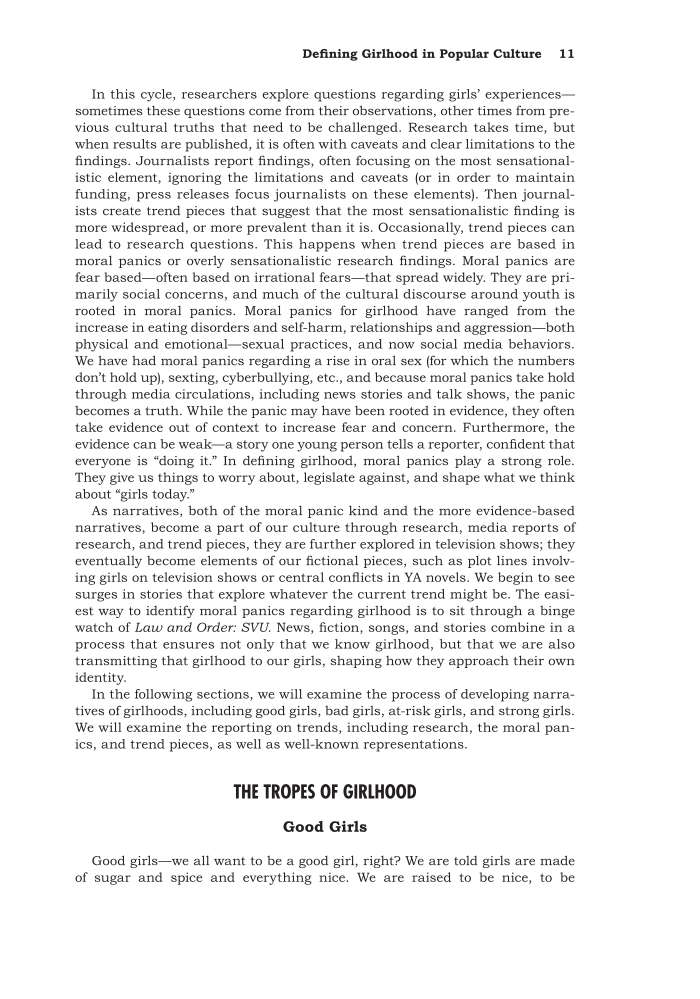Defining Girlhood in Popular Culture 11 In this cycle, researchers explore questions regarding girls’ experiences— sometimes these questions come from their observations, other times from pre- vious cultural truths that need to be challenged. Research takes time, but when results are published, it is often with caveats and clear limitations to the findings. Journalists report findings, often focusing on the most sensational- istic element, ignoring the limitations and caveats (or in order to maintain funding, press releases focus journalists on these elements). Then journal- ists create trend pieces that suggest that the most sensationalistic finding is more widespread, or more prevalent than it is. Occasionally, trend pieces can lead to research questions. This happens when trend pieces are based in moral panics or overly sensationalistic research findings. Moral panics are fear based—often based on irrational fears—that spread widely. They are pri- marily social concerns, and much of the cultural discourse around youth is rooted in moral panics. Moral panics for girlhood have ranged from the increase in eating disorders and self-harm, relationships and aggression—both physical and emotional—sexual practices, and now social media behaviors. We have had moral panics regarding a rise in oral sex (for which the numbers don’t hold up), sexting, cyberbullying, etc., and because moral panics take hold through media circulations, including news stories and talk shows, the panic becomes a truth. While the panic may have been rooted in evidence, they often take evidence out of context to increase fear and concern. Furthermore, the evidence can be weak— a story one young person tells a reporter, confident that everyone is “doing it.” In defining girlhood, moral panics play a strong role. They give us things to worry about, legislate against, and shape what we think about “girls today.” As narratives, both of the moral panic kind and the more evidence-based narratives, become a part of our culture through research, media reports of research, and trend pieces, they are further explored in television shows they eventually become elements of our fictional pieces, such as plot lines involv- ing girls on television shows or central conflicts in YA novels. We begin to see surges in stories that explore whatever the current trend might be. The easi- est way to identify moral panics regarding girlhood is to sit through a binge watch of Law and Order: SVU. News, fiction, songs, and stories combine in a process that ensures not only that we know girlhood, but that we are also transmitting that girlhood to our girls, shaping how they approach their own identity. In the following sections, we will examine the process of developing narra- tives of girlhoods, including good girls, bad girls, at-risk girls, and strong girls. We will examine the reporting on trends, including research, the moral pan- ics, and trend pieces, as well as well-known representations. THE TROPES OF GIRLHOOD Good Girls Good girls—we all want to be a good girl, right? We are told girls are made of sugar and spice and everything nice. We are raised to be nice, to be
Document Details My Account Print multiple pages
Print
You have printed 0 times in the last 24 hours.
Your print count will reset on at .
You may print 0 more time(s) before then.
You may print a maximum of 0 pages at a time.













































































































































































